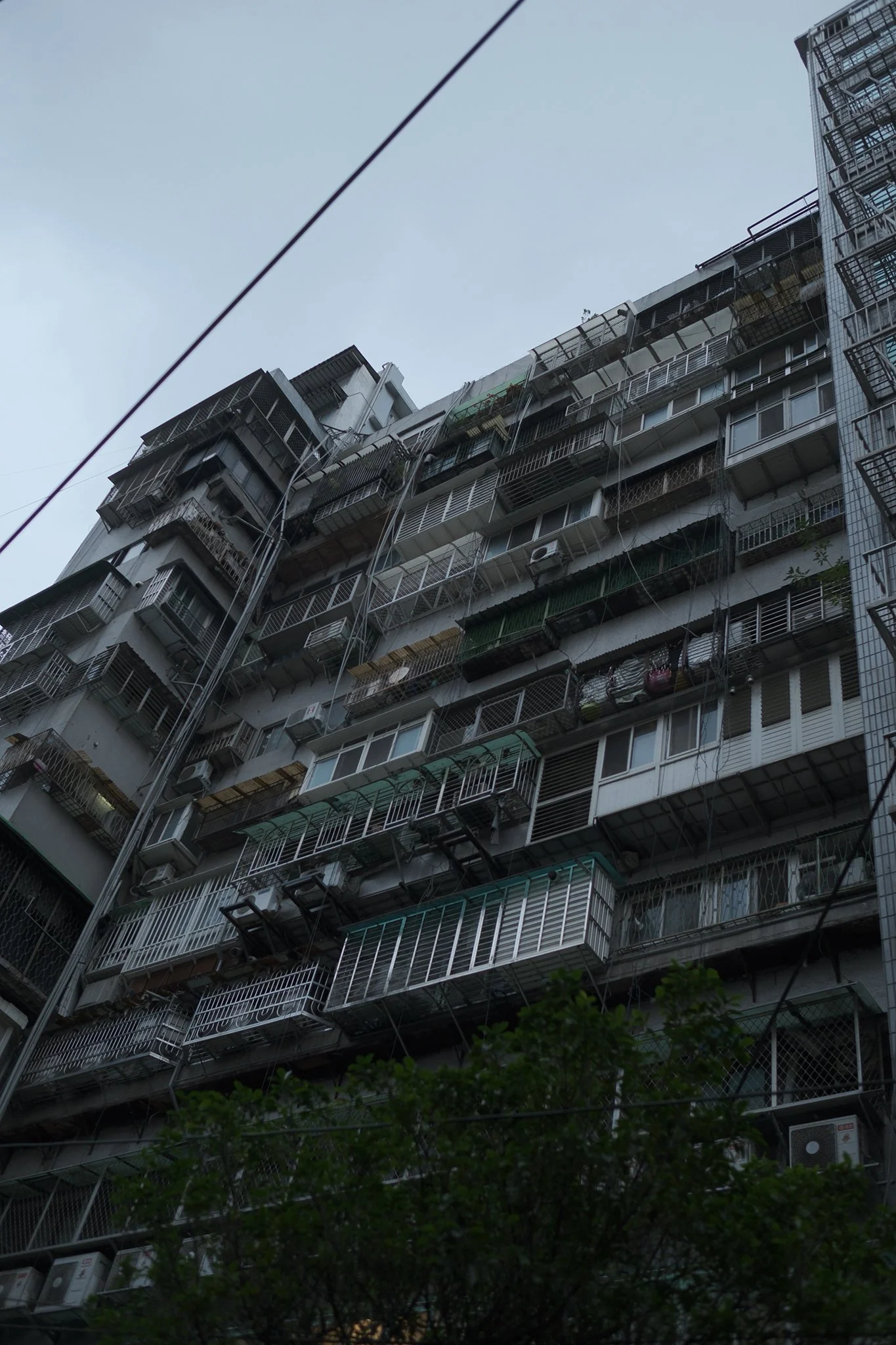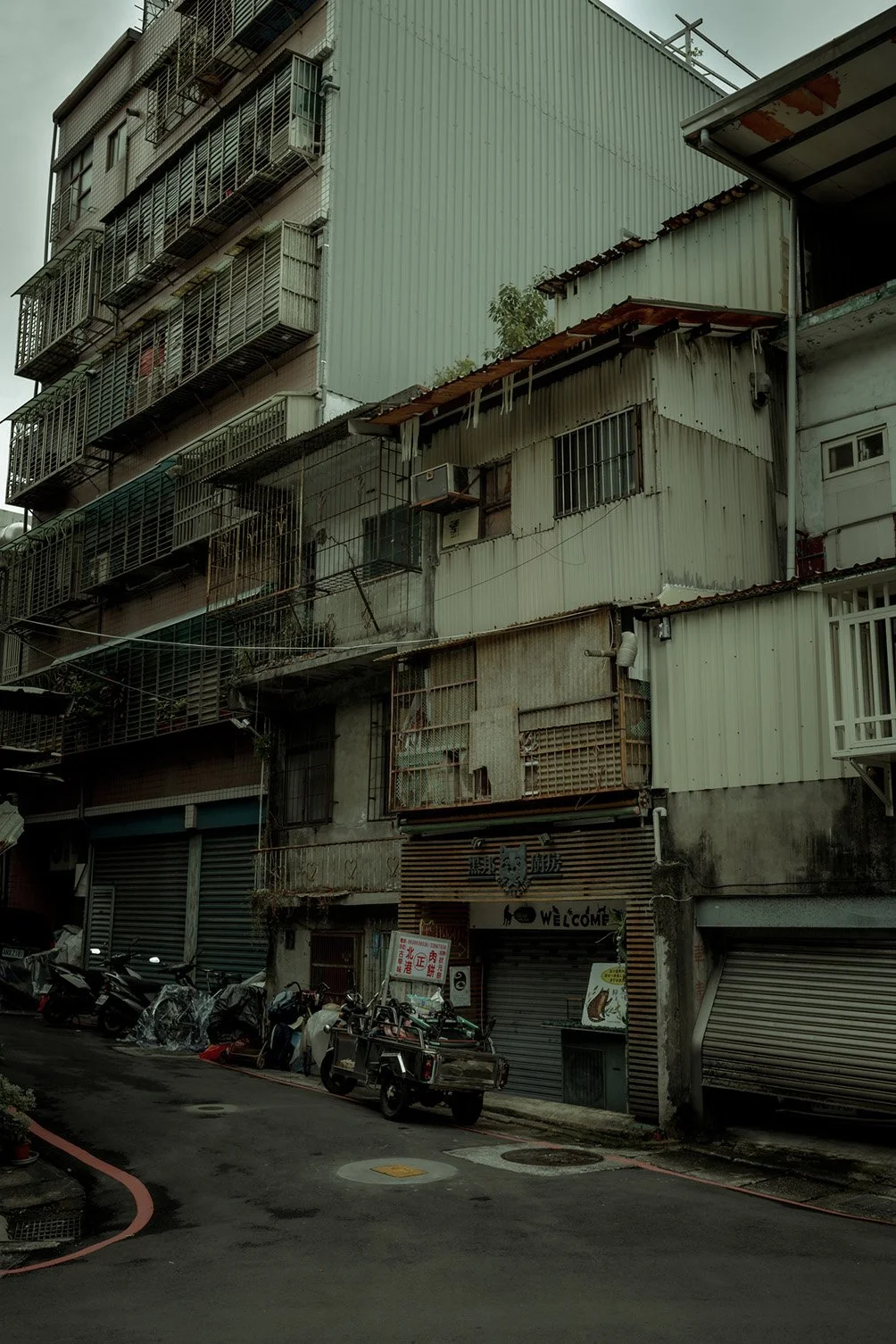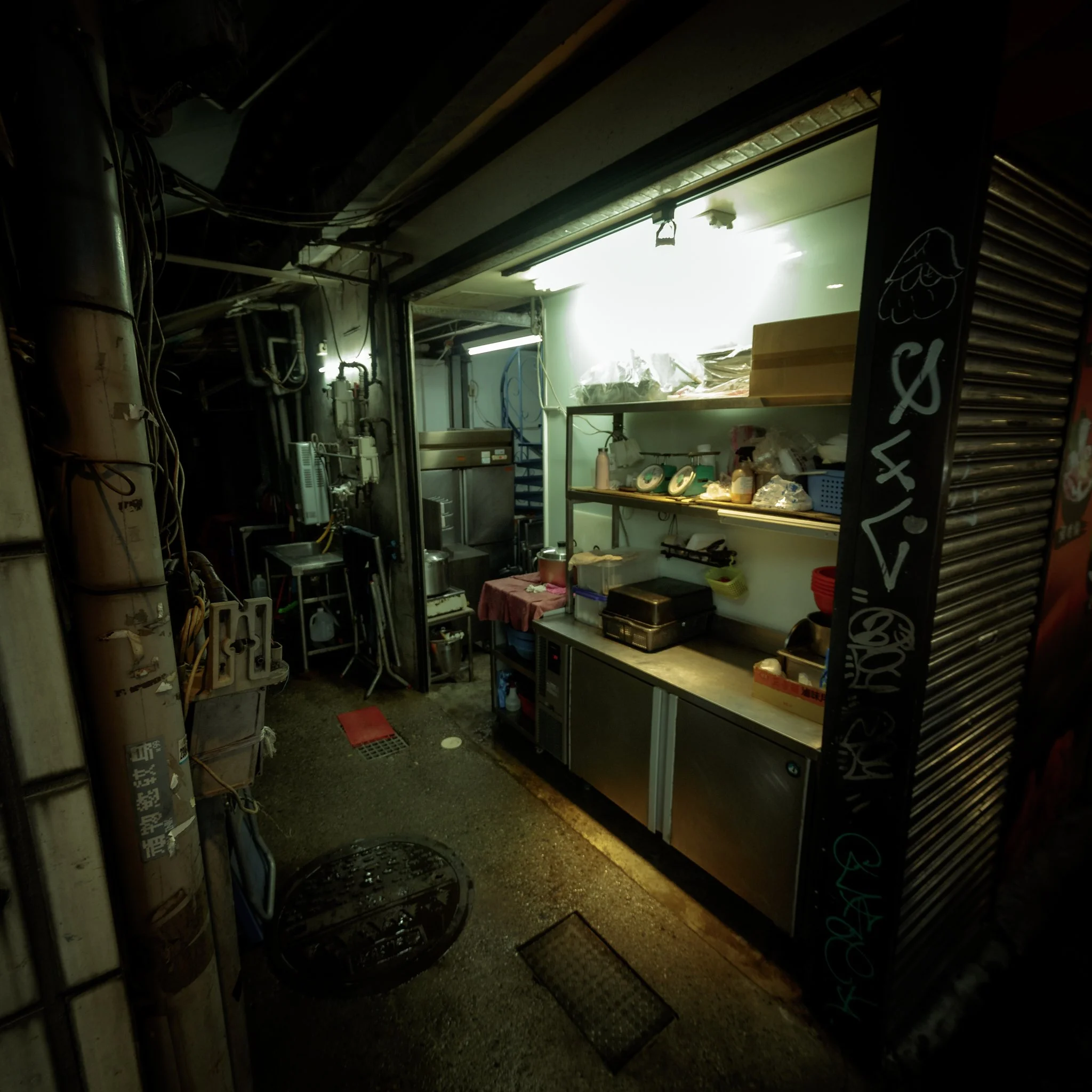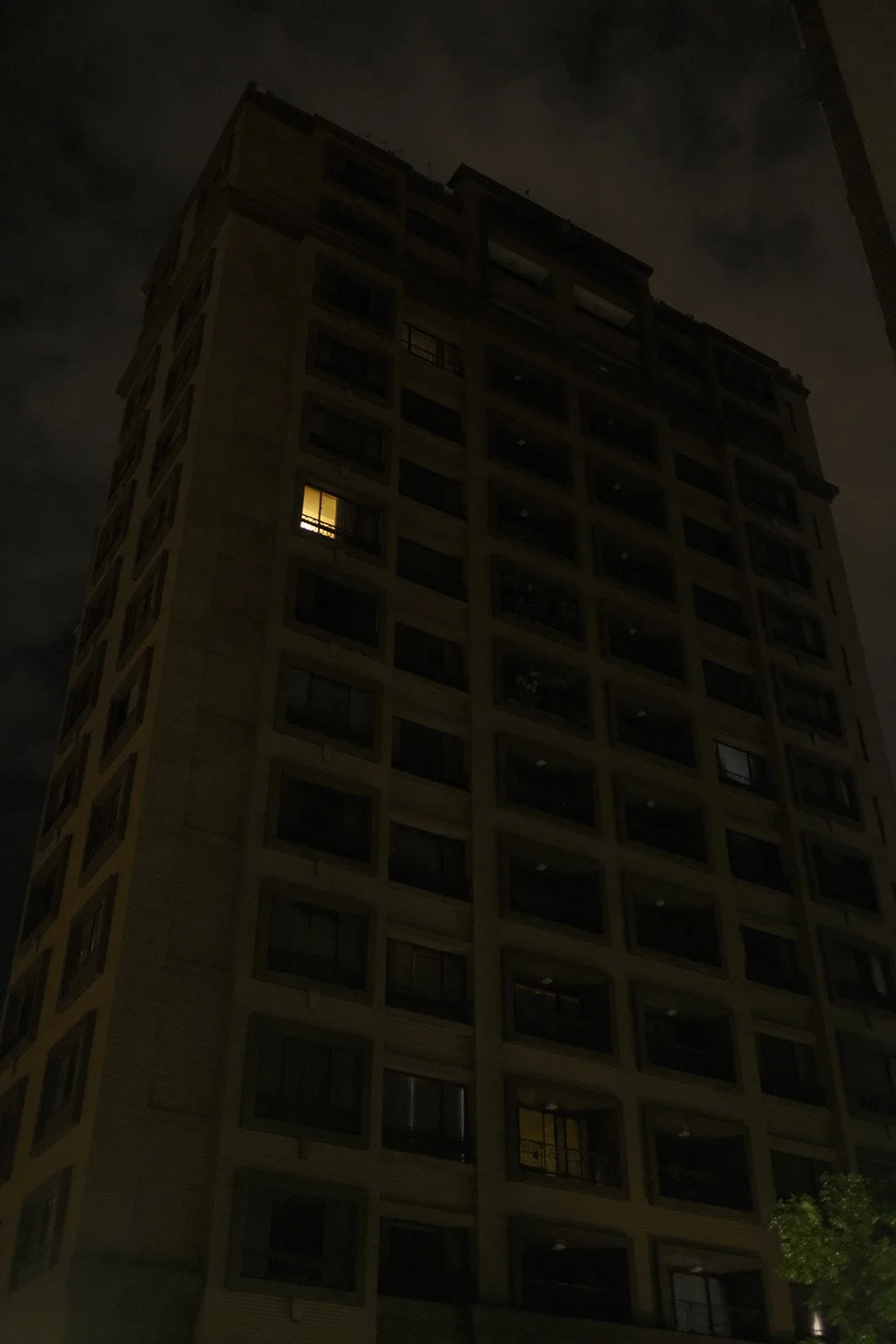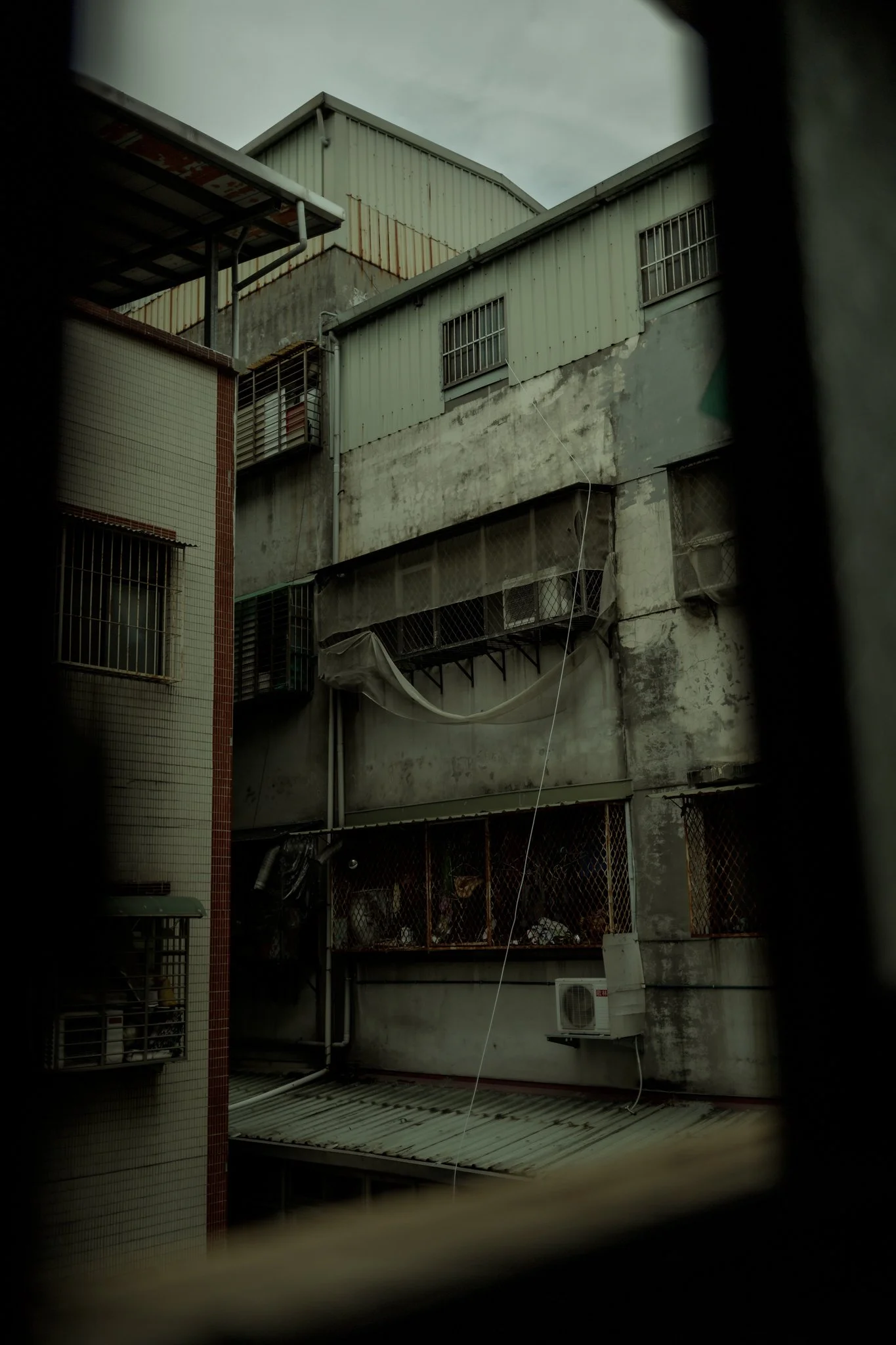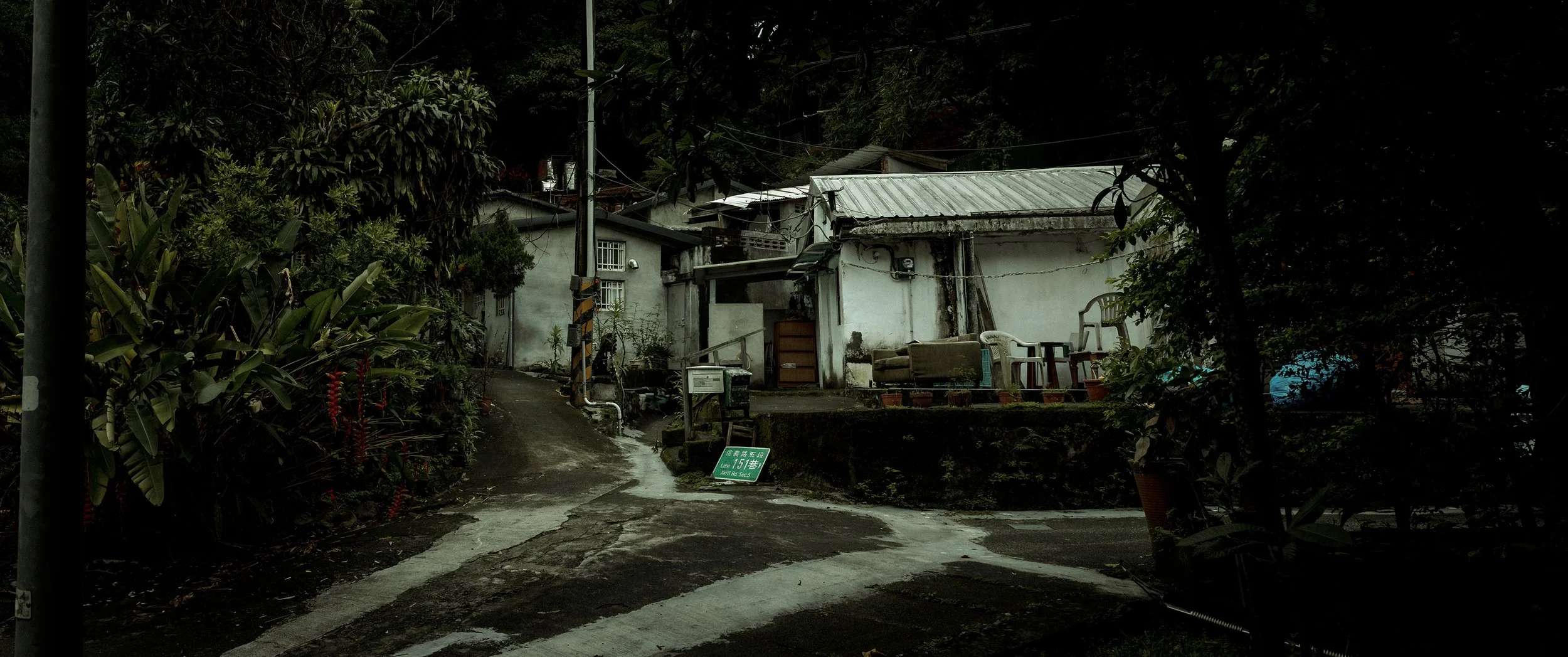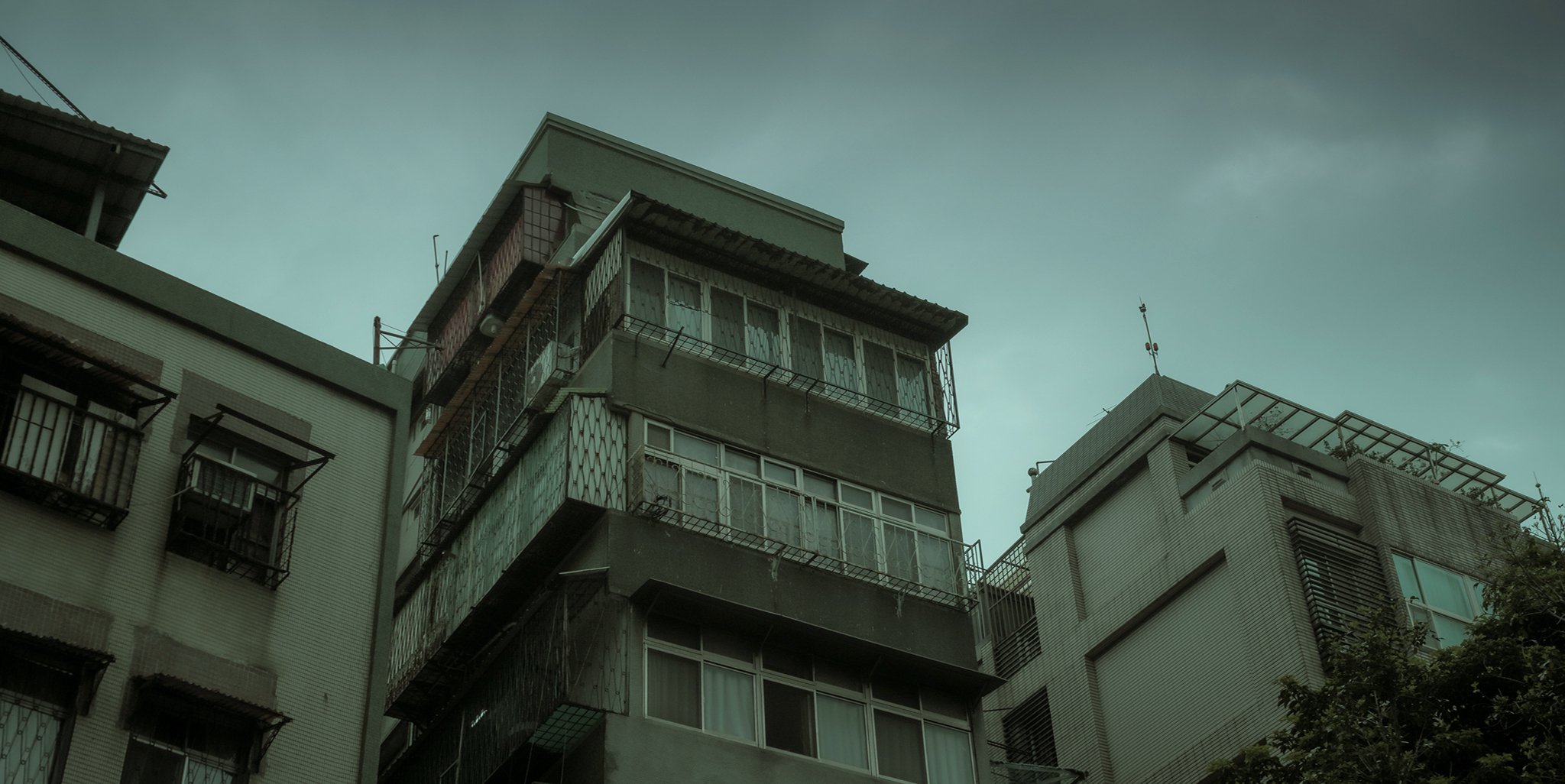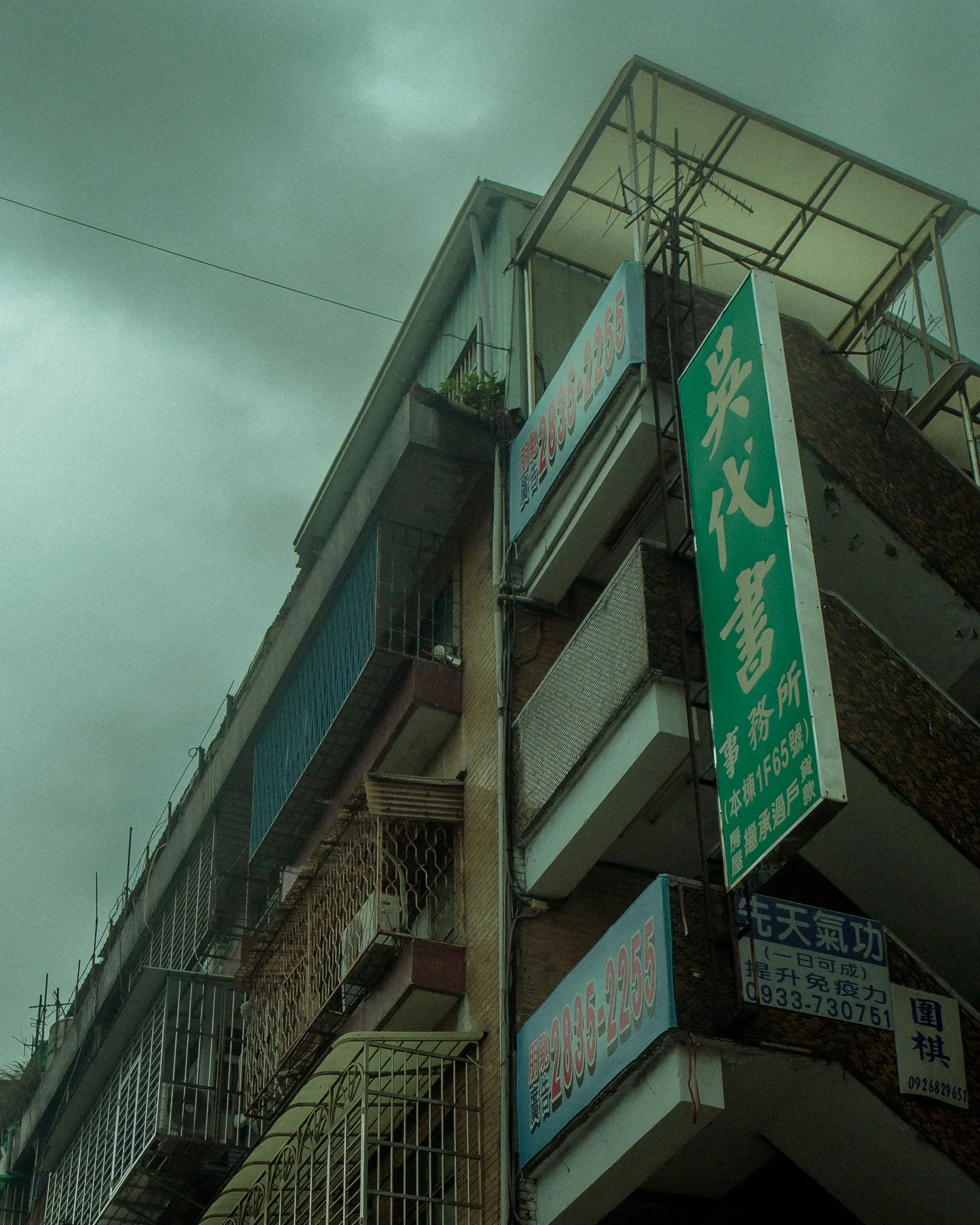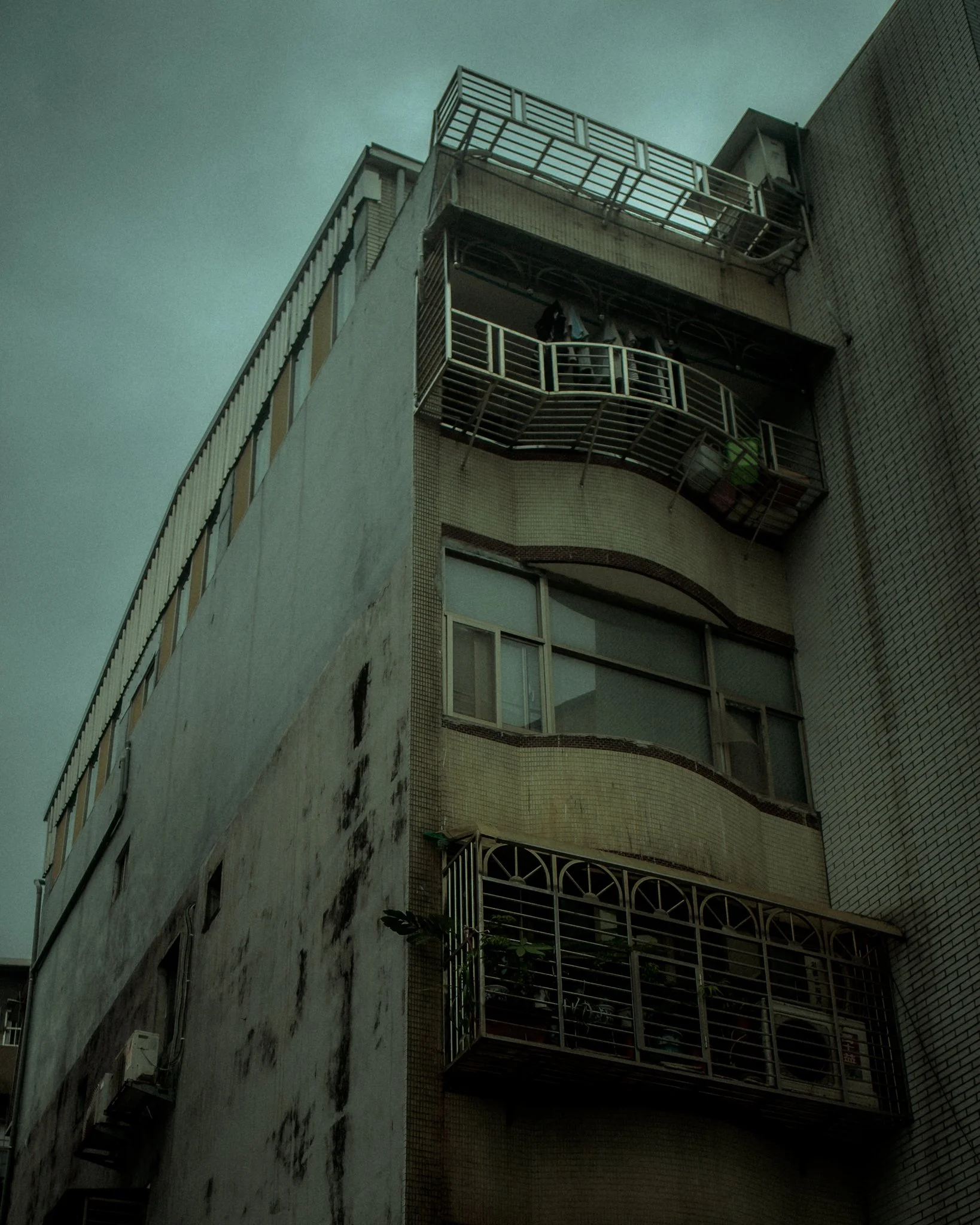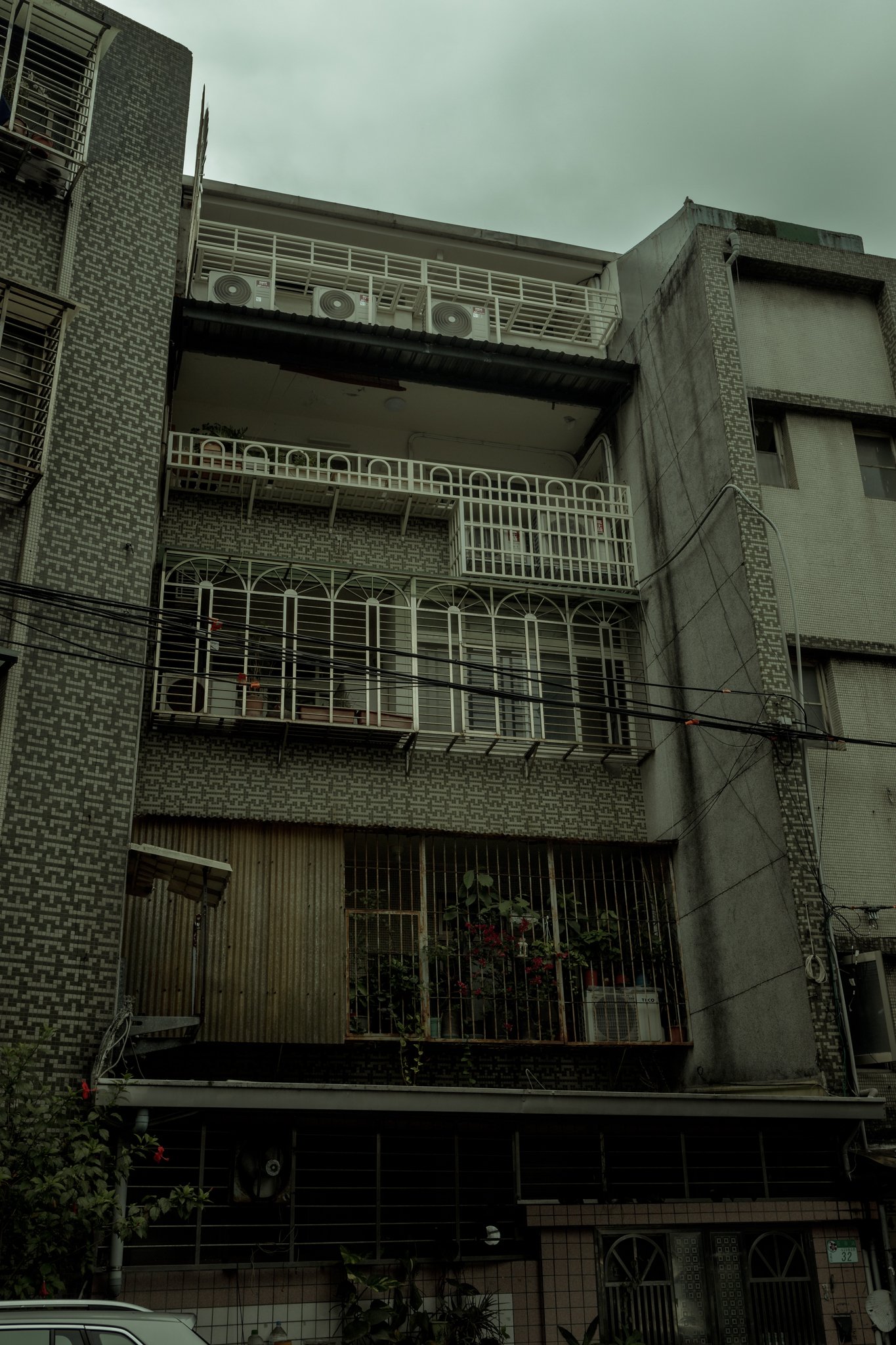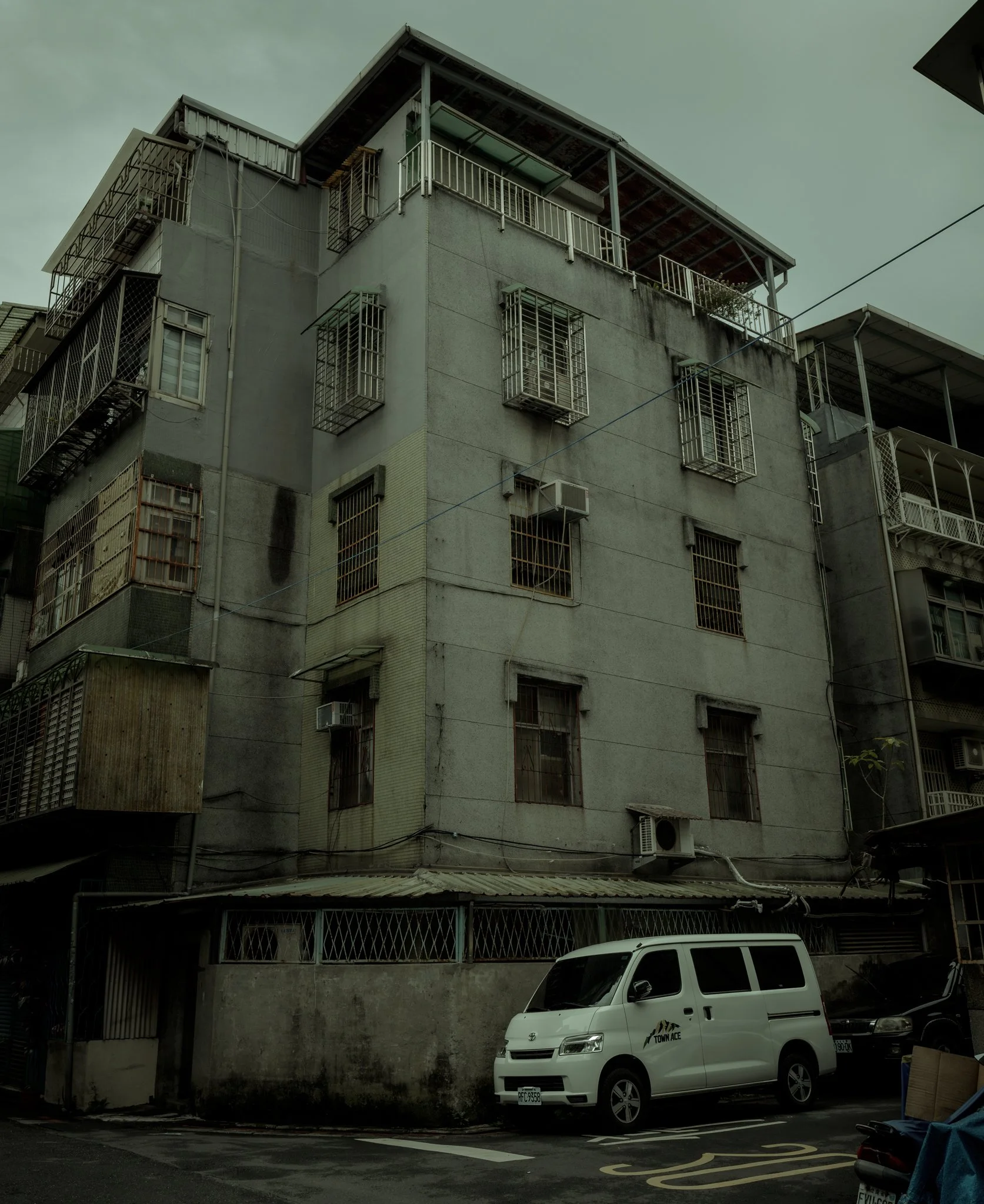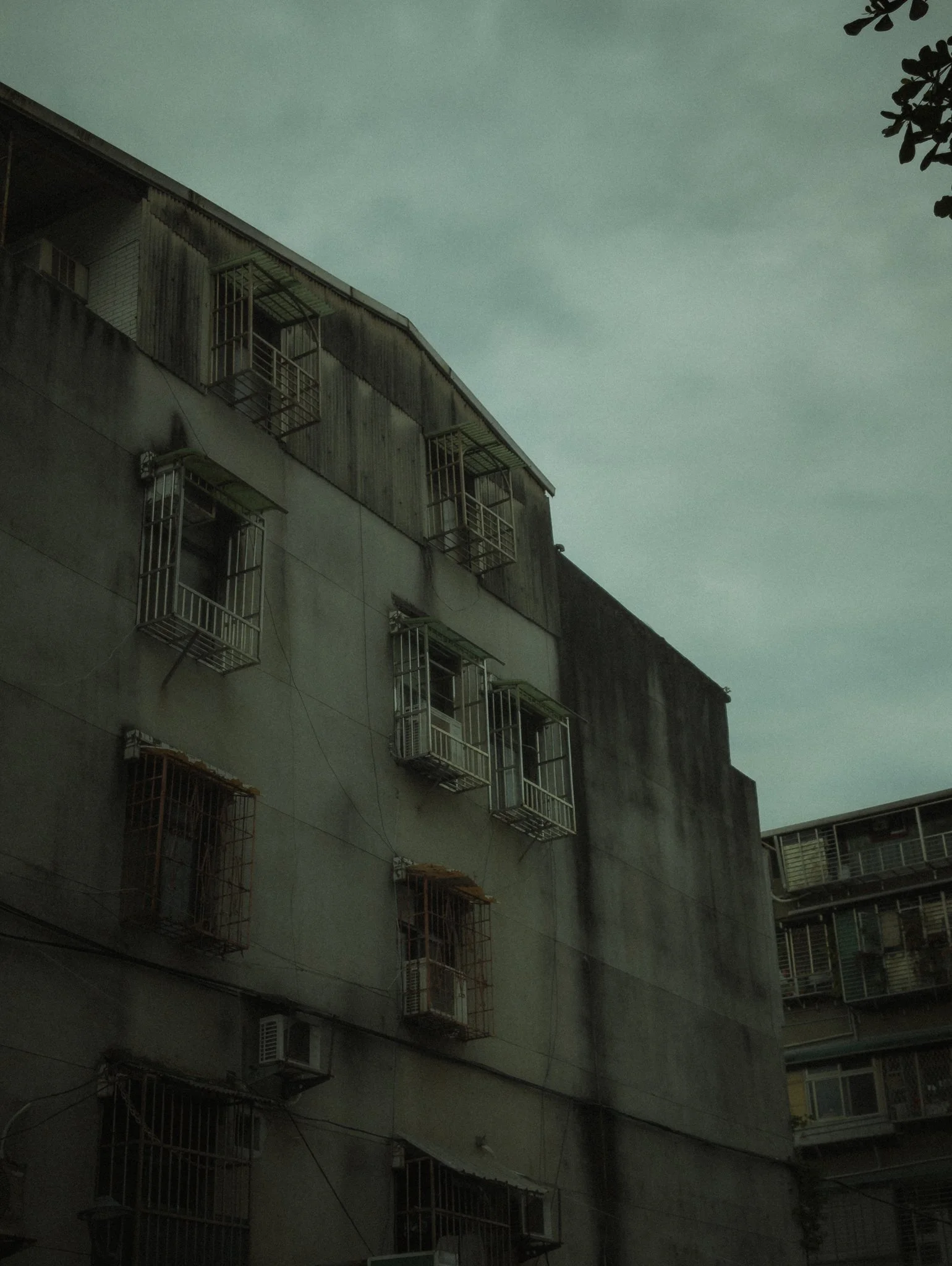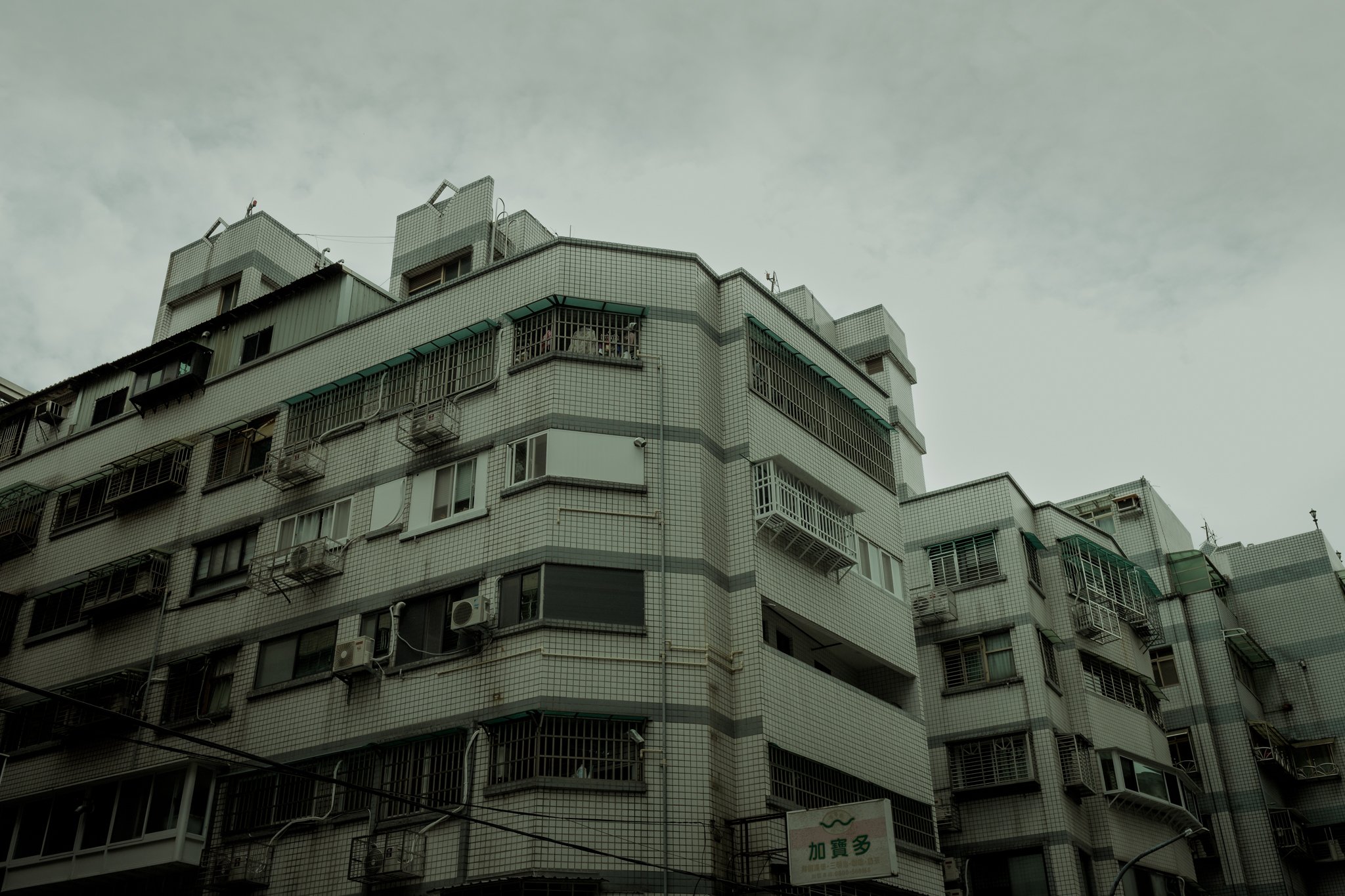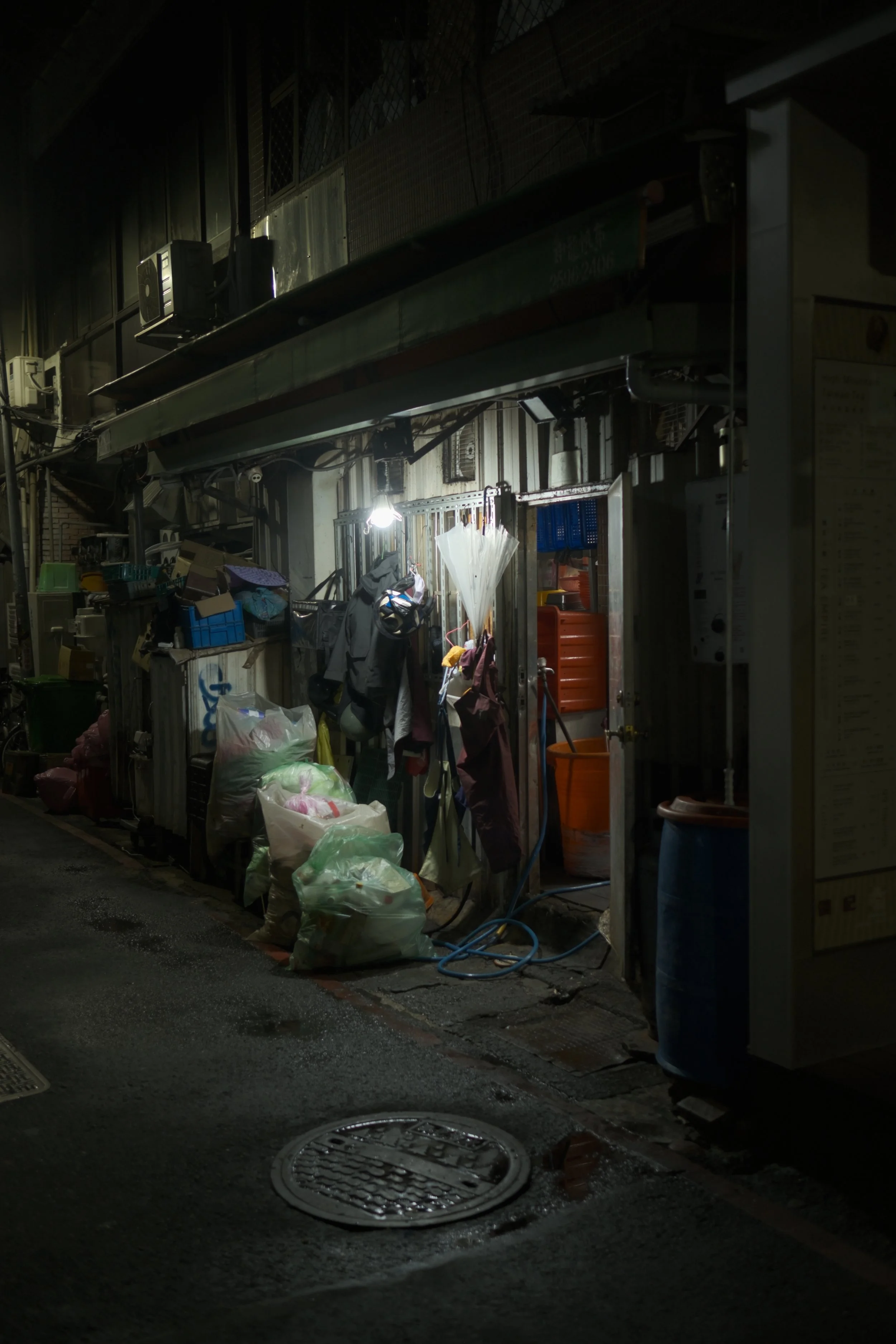Taipei : oppression and inequality
This ongoing project documents how people transform the urban landscape under the pressure of Taiwan's real estate system. As property is treated as investment, prices rise, spaces shrink and the cityscape is reshaped.
Most of these images were taken during my daily commute, on my way to or from work. I chose to photograph them during the rainy season, as I wanted the overcast sky to reflect the heavy, sometimes oppressive atmosphere of the environments I'm capturing.
Let’s begin with the most striking and hard-to-miss type of apartment extension: window cages. In this photo, a wide variety of designs is visible, with some modern, and others clearly older. These structures weren’t part of the building’s original design but were added later to extend the space of each unit.
Here, we can see how differently each resident uses them: some cages serve as makeshift storage, others are used for drying clothes, and a few are filled with potted plants. Although Taipei isn’t particularly green, it’s common to see potted plants on the streets or tucked into spaces like these window cages, adding a touch of nature to the urban landscape.
This picture shows another common urban modification: the rooftop extension, made obvious here because of the walls that are made of corrugated metal sheets. Built without permits, these rooftop units sit on buildings never meant to carry their weight, which makes them structurally unsafe. Constructed from low-cost materials like corrugated metal, they offer poor insulation, leading to uncomfortable temperatures and high energy costs. Even those constructed with concrete walls provide little noticeable improvement. Despite the risks and drawbacks, their affordability makes them a common choice for individuals and families with limited income.
I took this picture because the contrast between the clean, pristine car and its grimy, decaying surroundings was too compelling to ignore.
This kind of contrast is not uncommon in Taiwan. While expensive cars are usually well-maintained, more affordable vehicles don’t always receive the same level of care. Still, it’s common to see people taking better care of their car than the building they live in.
One reason is that a building’s exterior is a shared responsibility, maintaining it requires collective agreement and shared costs, which can be difficult to organize. A car, on the other hand, is a personal investment and fully under the owner's control, making it easier to justify spending time and money on its upkeep.
Furthermore, these buildings are old and were built during Taipei fast growing urban expansion, they were never meant to last. They often used low-cost materials, and maintenance has been deferred for decades. Combined with the fragmented ownership of apartment units, this creates a system where no single resident has the authority (or incentive) to carry out meaningful repairs.
The result is a cityscape where private possessions shine against a backdrop of collective neglect.
I took these pictures to show the contrast between the older building in the foreground and the newer one in the background.
In the left image, marks around the windows suggest that metal cages were once installed. The windows themselves have been partially sealed with concrete. On the left window, a hole indicates where an AC unit used to be; the right window has a pipe protruding through a hole in the glass, suggesting another improvised AC installation.
The right image shows a vacant apartment. While the missing air conditioner is a clue, an even stronger indication is the sign behind the window, possibly a “for rent” or “for sale” notice, though I couldn’t make out the exact wording.
Both images show how older buildings weren’t built with air conditioning in mind, with clear signs of later modifications to accommodate it.
This building appears to have lost its neighbor at some point, as suggested by the lack of windows on the second floor facing the street and the presence of a wooden door that resembles an interior one.
Although, I checked satellite imagery to determine when the adjacent structure might have been removed, but the oldest clear image I could find dates back to 2000, with no visible signs of demolition. If the neighboring building was torn down, it likely happened before then.
In the foreground, a car is parked directly on the roadside, there’s no sidewalk here, a reflection of how car-centric Taipei can be. A traffic cone sits beside it, not to indicate construction work, but to reserve the parking space; an informal and common tactic in many neighborhoods.
The newer building behind it, which began construction in 2015, adds a noticeable contrast to the scene. In Taipei, it's not uncommon to see old, weathered buildings standing side by side with brand-new ones; a reflection of the city’s uneven pace of redevelopment.
This picture shows a restaurant kitchen spilling out into a narrow alley, with the interior barely visible through the doorway.
Setups like this would almost certainly fail sanitary inspections in many western countries, but in Taiwan, they’re a common sight, especially in old neighborhoods. In this case, part of the kitchen is located outside, while other elements, like the fridge, can be spotted through the door.
There is no seating area; the restaurant is take-out only. It’s a practical solution in a dense urban environment, where maximizing available space often leads to these hybrid, semi-outdoor arrangements. Rather than being exceptions, such configurations are part of the city’s everyday landscape; blending private function with public space in ways that reflect both economic constraints and cultural norms.
Despite appearances of complete abandonment, some places are still lived in.
As mentioned earlier, shared spaces are often poorly maintained; in this case, the neglect is particularly extreme. The building looks like it has been left to decay, yet subtle signs of life tell a different story.
The openings in the façade lead to a shared hallway. On the lower floor, a man can be seen smoking a cigarette; above him, a rack of clothes hangs out to dry.
Many landlords have little incentive to invest in repairs, especially when tenants are transient or rents are kept low. Meanwhile, residents make do by using every bit of available space; whether it’s cages on windows, rooftop extensions, or even shared areas like hallways and stairwells.
Culturally, less emphasis is placed on the appearance of shared or exterior spaces, while attention and care are more often directed toward personal belongings and private interiors. Without clear collective responsibility or authority, repairs are often postponed indefinitely, tenants may feel, "Why should I pay to fix something others also use?" In the end, spaces are used, but rarely maintained.
This is not an uncommon sight in Taipei: residential towers remaining dark and silent at night, with only a few faintly lit windows while the majority stay unilluminated.
Real estate is often seen as a safe place to store money, especially with low property and capital gains taxes. As a result, some people buy apartments simply to hold onto them, leaving them empty rather than renting them out.
This scene reflects a broader pattern: many modern units are bought as long-term assets, not lived-in homes. According to a 2025 article from The Economist, an estimated 20% of homes in Taiwan are empty, and nearly 25% of properties built in the past five years are unoccupied.
All of this happens while many residents are priced out of the market or forced to live in aging, poorly maintained buildings.
This project remains a work in progress, with many more location and stories yet to be documented.
It aims to shed light on the everyday realities behind Taipei’s complex skyline: on one hand, a story of adaptation, where residents creatively manipulate limited space through window cages and rooftop extensions; on the other, a cultural story, where shared areas often fall into neglect and decay. At the same time, the prevalence of dark, unoccupied apartments at night highlights the impact of speculative investment, with housing treated more as assets than homes. Together, these layers illustrate a city shaped by economic forces, social behaviors, and cultural norms.
Below are more scenes that illustrate the themes discussed.
I used several sources to write this articles, it’s not based on anecdotal experience.
https://www.economist.com/asia/2025/01/30/why-taiwanese-youth-complain-of-becoming-housing-slaves
https://topics.amcham.com.tw/2023/08/who-can-afford-to-live-in-taipei/
https://www.taipeitimes.com/News/editorials/archives/2021/09/29/2003765187
https://www.taipeitimes.com/News/editorials/archives/2023/07/10/2003802946
https://www.taipeitimes.com/News/lang/archives/2016/09/14/2003655083
https://english.cw.com.tw/article/article.action?id=3751
https://www.bbc.com/news/world-asia-31484052
https://www.sciencedirect.com/science/article/abs/pii/S2214629625002373
Don’t take this article as a source, because I’m just a regular person, not a journalist.
EDIT 2025.08.27 :
I forgot to talk about it, but rents is not the only issue crippling the budget of Taiwanese, mortgages too.
https://www.cna.com.tw/postwrite/chi/409021
Also, the surface area of the average apartment also reduced in size.
https://news.housefun.com.tw/news/article/181685470747.html#news-article
